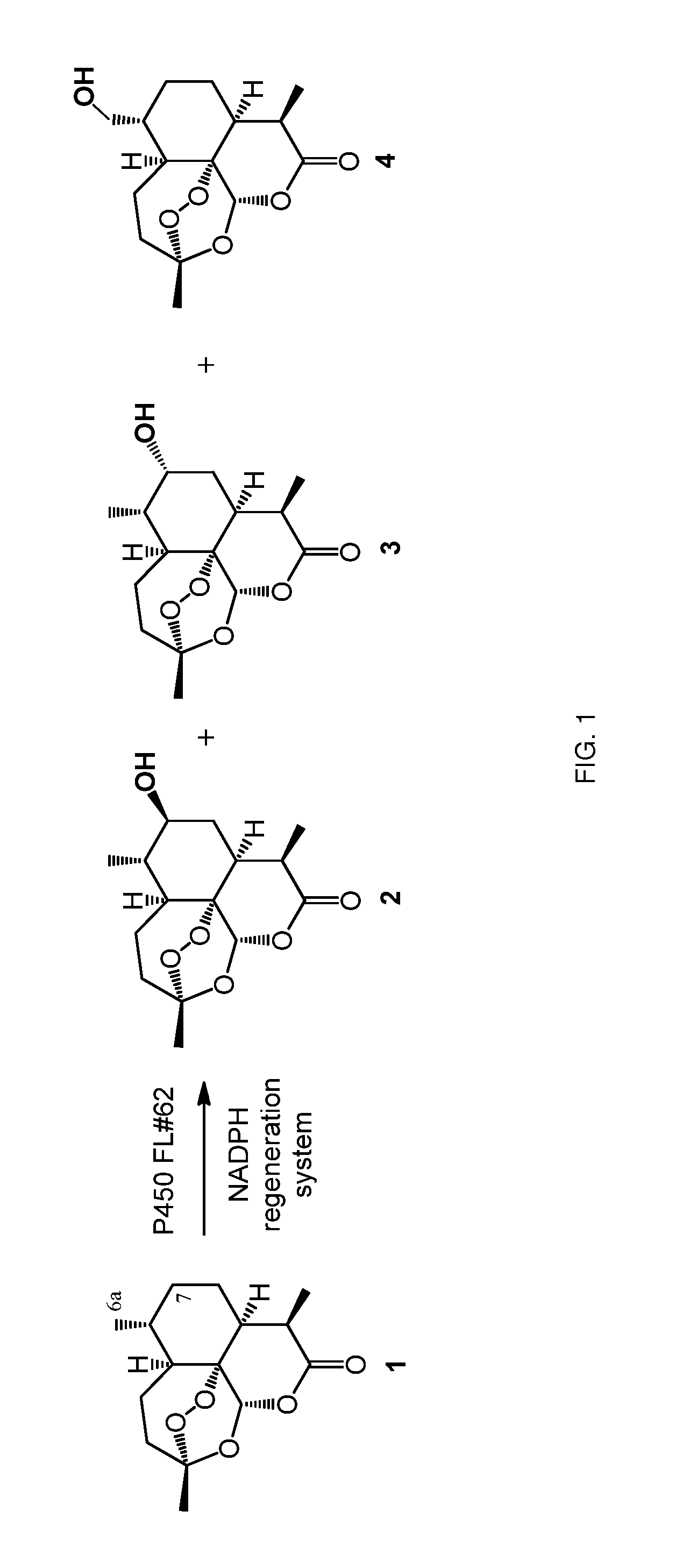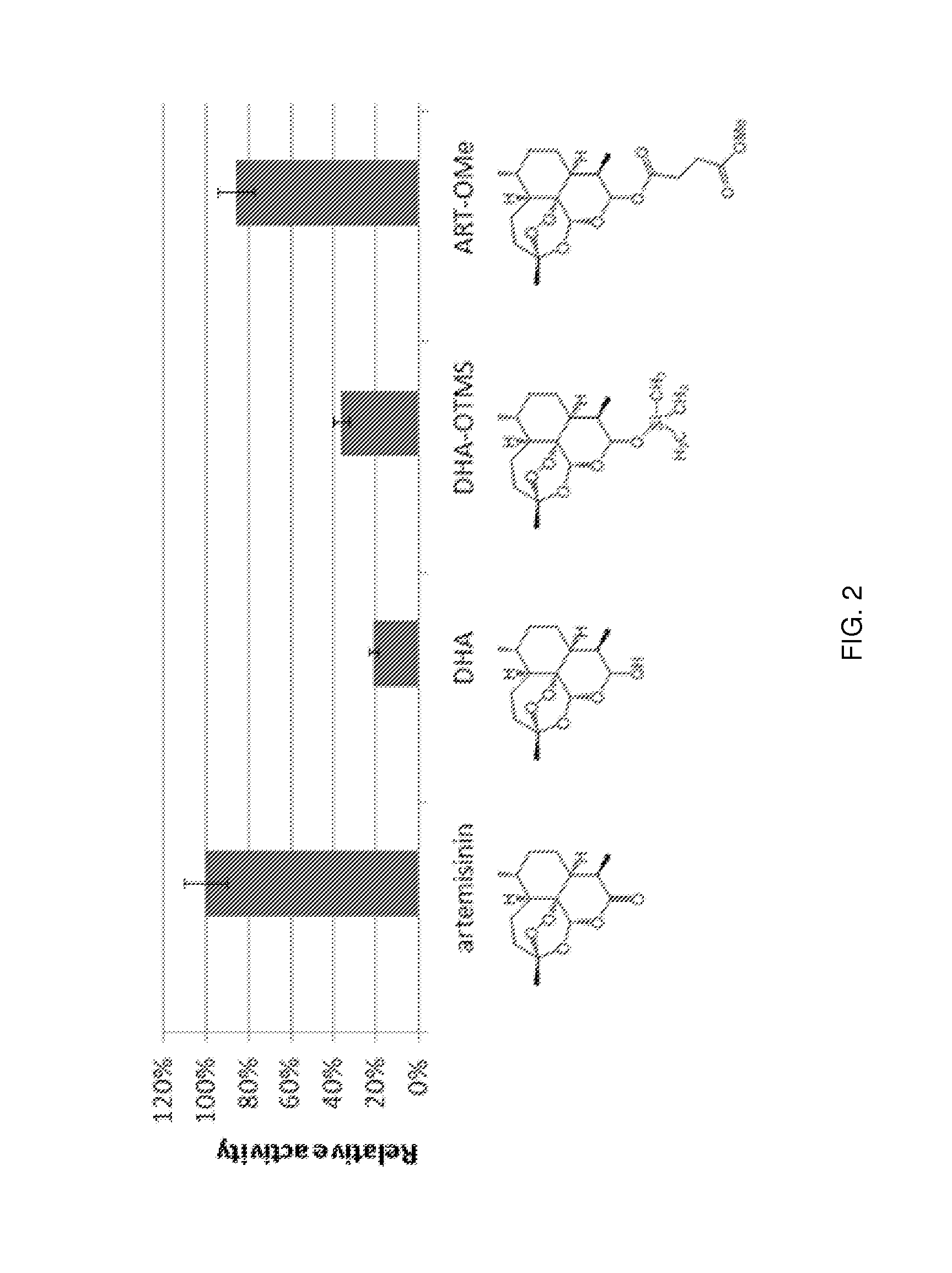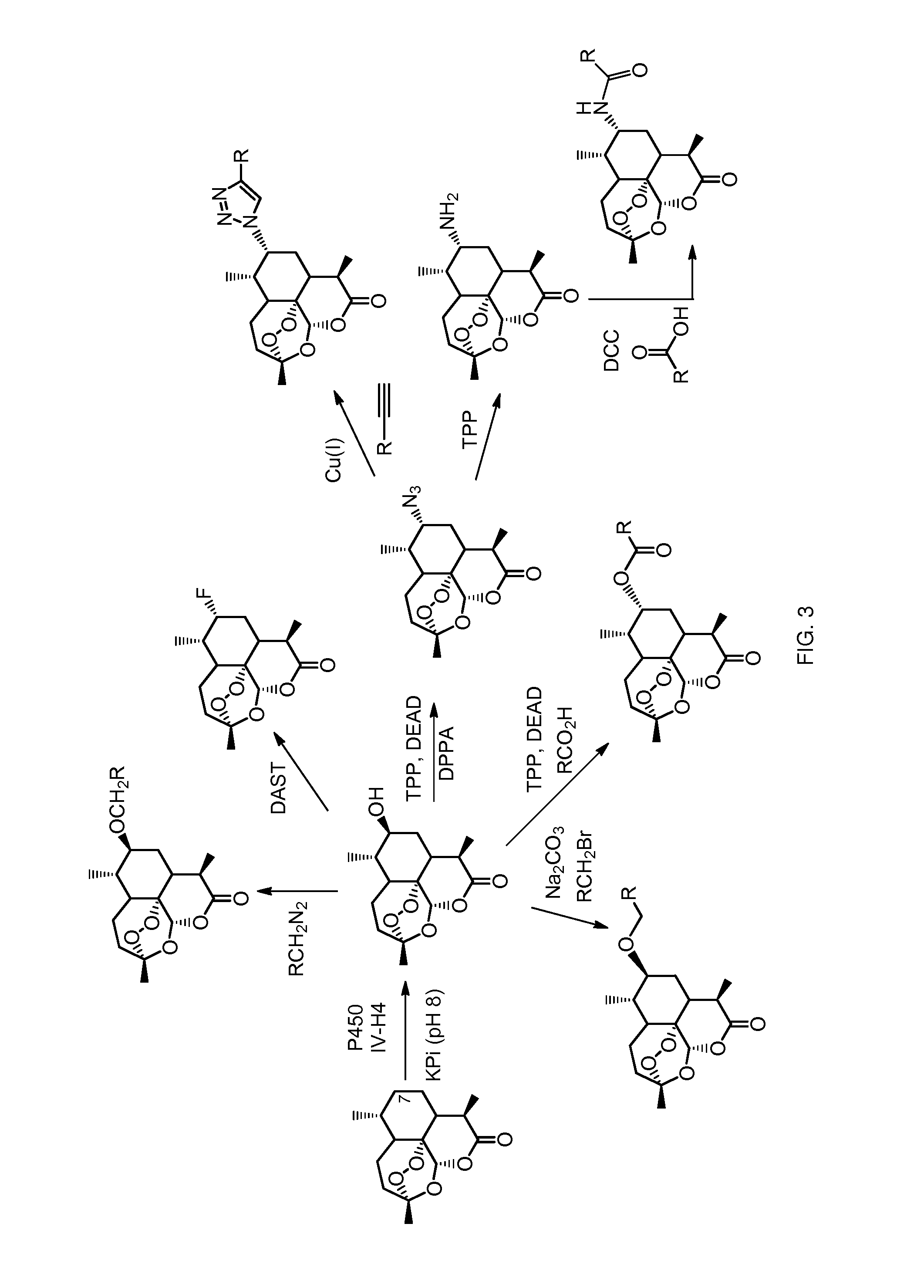Artemisinin derivatives, methods for their preparation and their use as antimalarial agents
- Summary
- Abstract
- Description
- Claims
- Application Information
AI Technical Summary
Benefits of technology
Problems solved by technology
Method used
Image
Examples
example 1
6.1 Example 1
Generation and Identification of Engineered P450 Polypeptides for Artemisinin Hydroxylation
[0226]This example demonstrates how engineered P450 polypeptides derived from CYP102A1 (SEQ ID NO. 1) having improved enzyme properties for hydroxylation of artemisinin can be generated, characterized and identified. Furthermore, it demonstrates how these enzymes can be applied to generate and isolate hydroxylated derivatives of artemisinin, such as 6a-hydroxy-artemisinin, 7 (S)-hydroxyartemisin, and 7 (R)-hydroxyartemisin, in preparative scale and in high isolated yields.
[0227]In initial experiments, P450 variant FL#62 (SEQ ID NO. 8) was found to be capable of hydroxylating ART with high activity, i.e., supporting about 340 total turnovers (TTN) in the presence of a NADPH cofactor regeneration system and producing a mixture of 7 (S)-hydroxy-ART (2), 7 (R)-hydroxy-ART (3), and 6a-hydroxy-ART (4) in 83:10:7 ratio (FIG. 1). Despite the limited site-selectivity of this variant, the a...
example 2
6.2 Example 2
Hydroxylation of C10-Substituted Artemisinin Analogs
[0255]This example demonstrates how engineered P450 polypeptides provided herein are useful for carrying out the hydroxylation of compounds of general formula (I), and specifically, C10-substituted analogs of artemisinin
[0256]P450 variant FL#62 (SEQ ID NO. 8), which possesses high activity on artemisinin (TTN: 339), was made react with three different C10-substituted analogs of artemisinin, namely dihydroartemisinin (Formula I; A=—OH), 10-trimethylsylylether-artemisinin (Formula I; A=—Si(CH3)3), and artesunate methyl ester (Formula I; A=—OC(O)CH2—CH2C(O)OCH3). Reaction conditions were: 0.5 mM substrate, 1 μM FL#62, 2 μM PTDH, 100 μM NAM)+, and 50 mM sodium phosphite in potassium phosphate buffer (50 mM, pH 8.0). After 12 hours, the hydroxylation products formed in these reactions were extracted with dichloromethane and quantified by HPLC and LC-MS. As illustrate in FIG. 2, the enzyme was found to be capable of hydroxyl...
example 3
6.3 Example 3
Synthesis of 7-Substituted Artemisinin Derivatives
[0257]This example describes and demonstrates the preparation of compounds of general formula IV and V according to the methods of the invention.
[0258]Synthesis of Compound 5 (FIG. 4).
[0259]Under argon atmosphere, to the solution of 7 (S)-hydroxy-artemisinin (50 mg, 0.17 mmol) in anhydrous CH2Cl2 (5 mL) was added (diethylamino)sulfur trifluoride (55 mg, 0.34 mmol) dropwise at −78° C. The reaction was warmed up to 0° C. and stirred until completion. The reaction mixture was quenched with 60 μL triethylamine and extracted with CH2Cl2 (2×5 mL). The collected organic layers was dried with sodium sulfate, concentrated in vacuum, and purified by flash chromatography (hexanes / ethyl acetate: 3 / 1) to afford 7 (R)-fluoro-artemisinin (compound 5, 33 mg, 65%). 1H NMR (500 MHz, CDCl3): δ=1.20 (d, 3H, J=7.0 Hz), 1.27 (d, 3H, J=7.4 Hz), 1.25-1.32 (m, 1H), 1.51 (s, 3H), 1.48-1.54 (m, 1H), 1.94 (m, 1H), 2.03 (m, 1H), 2.14 (m, 1H), 2.29-...
PUM
| Property | Measurement | Unit |
|---|---|---|
| Fraction | aaaaa | aaaaa |
| Fraction | aaaaa | aaaaa |
| Electrical conductance | aaaaa | aaaaa |
Abstract
Description
Claims
Application Information
 Login to View More
Login to View More - R&D
- Intellectual Property
- Life Sciences
- Materials
- Tech Scout
- Unparalleled Data Quality
- Higher Quality Content
- 60% Fewer Hallucinations
Browse by: Latest US Patents, China's latest patents, Technical Efficacy Thesaurus, Application Domain, Technology Topic, Popular Technical Reports.
© 2025 PatSnap. All rights reserved.Legal|Privacy policy|Modern Slavery Act Transparency Statement|Sitemap|About US| Contact US: help@patsnap.com



